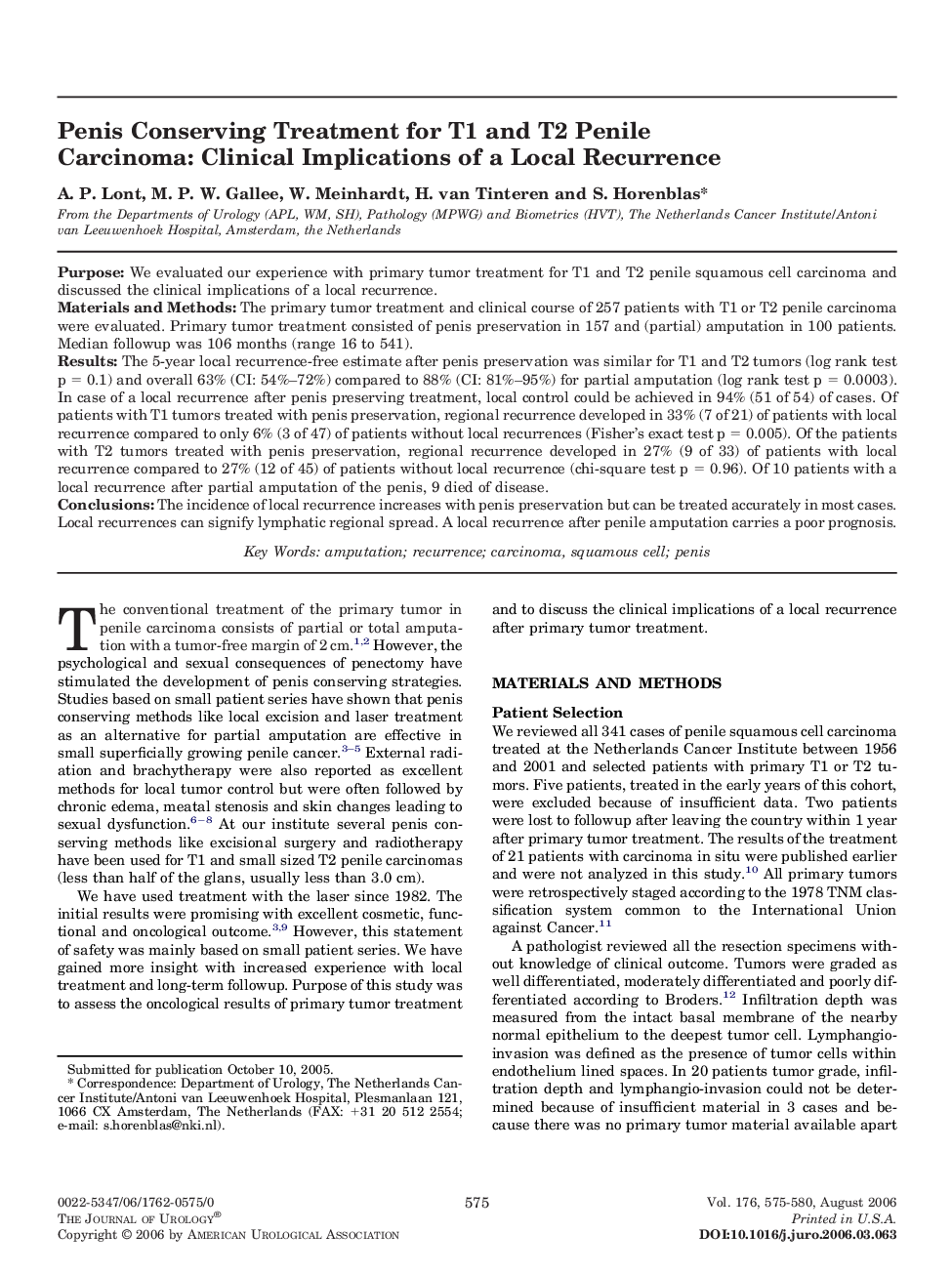| Article ID | Journal | Published Year | Pages | File Type |
|---|---|---|---|---|
| 3879507 | The Journal of Urology | 2006 | 6 Pages |
PurposeWe evaluated our experience with primary tumor treatment for T1 and T2 penile squamous cell carcinoma and discussed the clinical implications of a local recurrence.Materials and MethodsThe primary tumor treatment and clinical course of 257 patients with T1 or T2 penile carcinoma were evaluated. Primary tumor treatment consisted of penis preservation in 157 and (partial) amputation in 100 patients. Median followup was 106 months (range 16 to 541).ResultsThe 5-year local recurrence-free estimate after penis preservation was similar for T1 and T2 tumors (log rank test p = 0.1) and overall 63% (CI: 54%–72%) compared to 88% (CI: 81%–95%) for partial amputation (log rank test p = 0.0003). In case of a local recurrence after penis preserving treatment, local control could be achieved in 94% (51 of 54) of cases. Of patients with T1 tumors treated with penis preservation, regional recurrence developed in 33% (7 of 21) of patients with local recurrence compared to only 6% (3 of 47) of patients without local recurrences (Fisher’s exact test p = 0.005). Of the patients with T2 tumors treated with penis preservation, regional recurrence developed in 27% (9 of 33) of patients with local recurrence compared to 27% (12 of 45) of patients without local recurrence (chi-square test p = 0.96). Of 10 patients with a local recurrence after partial amputation of the penis, 9 died of disease.ConclusionsThe incidence of local recurrence increases with penis preservation but can be treated accurately in most cases. Local recurrences can signify lymphatic regional spread. A local recurrence after penile amputation carries a poor prognosis.
